Many owners of private houses choose paints and varnishes for finishing the facade.
Facade paints are characterized by increased resistance to negative influences, high strength, good adhesion and reliability.
It is these qualities that allow the material to be used for facade work.
There are situations when it becomes necessary to paint the walls with such material, but not from the outside, but from the inside.
Is it worth it and what material to choose for this, it is better to understand in more detail.
The first thing you should pay attention to is what exactly is distinctive feature materials, which are designed to work outside the house and inside.
The list of differences is as follows:
- the main difference between these paints is that the materials developed for facade decoration, have improved performance. This is due to the need to delay various negative factors that destroy the coating and walls of the house;
- for materials on the facade, a prerequisite is the ability to reliably provide protection to the entire house;
- with regards to color, the pigment of such compositions is much richer and has increased resistance to fading.
Given its composition, which is designed for more severe and aggressive conditions, not always completely environmentally friendly. However, the fact that the facade coating is used outside the house, this feature does not matter much.
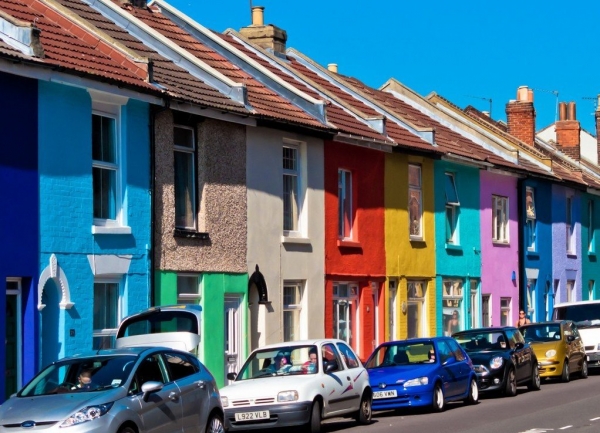
Based on the foregoing, it can be understood that the paint for holding internal works, will not have such qualities, and, therefore, such an aggressive composition. These materials do not need to be weather resistant. But there are high requirements for the speed of drying of materials, the absence of an unpleasant odor.
The main condition for paint for interior work is high level environmental friendliness, at the same time, there are paints for the facade, which are allowed to carry out interior decoration.
Types and characteristics
Paints and varnishes for finishing the facade are produced various kinds, which are characterized by a special composition and properties:
- made on the basis of liquid glass, in which organic additives, hardeners are present. It is intended for painting. lime surfaces, houses from gas blocks, and. The material is characterized by resistance to atmospheric phenomena, a high degree of air and vapor permeability, non-flammability. Such paint may lose color saturation over time, and the degree of adhesion with the main coating is initially small.
- The oil look is mainly used for painting wooden surfaces.. It contains drying oils of artificial origin and a coloring pigment. With its help, you can protect the wooden surface from the influence of moisture and prevent putrefactive processes. After coating with oil paint, the surface stops breathing, the paint dries for a long time. It cannot be used on alkaline surfaces, because in combination with them it changes its color, cracks and falls off. This type of paint does not have a high degree of durability.
- Enamel paints are used for wooden houses and metal elements. They are divided into alkyd and polyurethane. The first is characterized by the formation of a dense, strong, durable structure, however, it is very fragile. The second variety is no less durable and additionally has elastic properties, is not amenable to mechanical stress, and forms a glossy surface. It, like the previous one, cannot be used on an alkaline surface.
- is made on the basis of various substances and is polyvinyl acetate, butadiene styrene,, and . Paints based on PVC are characterized by a low level of resistance to moisture. They are not used for painting facades. The styrene-butadiene variety is highly susceptible to fading after exposure to UV rays.. Despite the fact that such paints are produced for facade work, it is not recommended to use this material for the exterior finishing process. For what purpose, the acrylic variety meets all the necessary requirements for facade paints, but cannot be used on a lime surface.
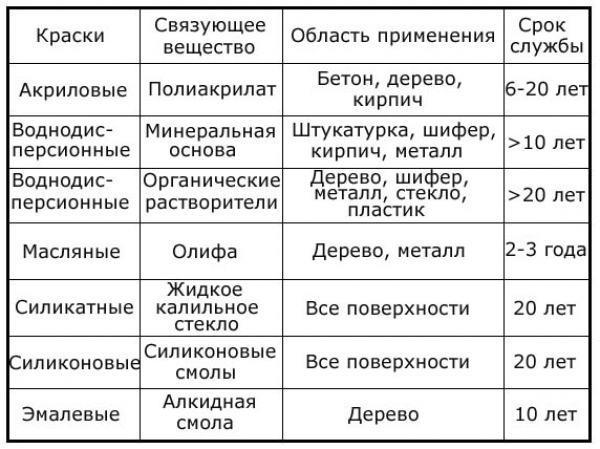
Can facade paint be used indoors?
Facade types of paint are used only taking into account the composition that meets the requirements for interior work.
These include:
- Binders. Silicone and acrylic varieties are suitable for this component of paints. For their production, synthetic resin is used, which gives them good quality and high performance.
- Waterproof level. This indicator should be maximum, since the surface also needs to be protected indoors. This is especially important if the finishing is carried out in the bathroom, kitchen or sauna.
- wear resistance. Regarding this parameter the best option is to use the acrylic variety. After application, it creates a high-density layer, which is characterized by resistance to any kind of influence, even mechanical. This allows the coating to provide an attractive appearance for a long time.
The paints and varnishes offered on the market have a fairly high drying rate, however, this point should be clarified before purchasing.
NOTE!
Facade paint can be used for interior work, but not all types are suitable for this.
Given the above, we can identify some types of facade paint that is suitable for interior work:
- Silicone. This variety belongs to the solvent-soluble ones, the composition of which is based on silicone. It can be applied to plastered walls, brick walls or concrete surfaces. The composition does not contain substances that can evaporate toxic substances. Some manufacturers produce a variety of this paint, which is suitable even for painting children's rooms.
- Acrylic also belongs to the class of organic-soluble, has a high drying rate. Given that it was developed specifically for use in non-standard climatic conditions, its composition is able to give protective properties to the surface and make it resistant to negative external influences.
- Water based acrylic paint. The composition contains fungicidal additives that provide coverage protective layer resistant to biodamage of various kinds. It is characterized by the formation of a polymer film of high strength. It does not react to external influences and retains its properties for a long time.
Conclusion
If there is no desire to purchase a special paint for interior decoration, then, based on the above characteristics and parameters, you can determine whether the paint for facades is suitable for interior work or not. Often no problems after staining facade paint the premises does not arise from the inside, but, in any case, it is worth bearing in mind what requirements the paint for interior work must meet.
In contact with
Today, when performing repair work, more and more people choose paint (especially if it is washable and does not have a sharp pungent odor), and paper finishing materials are gradually fading into the background. But, at the same time, users are not aware of what kind of coloring material is most suitable for indoor work.
That is why we will talk in more detail about what structural types of coloring finishing materials exist for indoor work, as well as on what basis it is better to purchase material for interior decoration.
The subtleties of choosing paint for interior decoration work
Whether you're looking forward to moving into your new home, or you're looking to update your home's familiar ambience, start with the essentials of choosing an indoor paint palette that's odorless. Newly played walls or ceilings will fill your gray days new positive emotions.
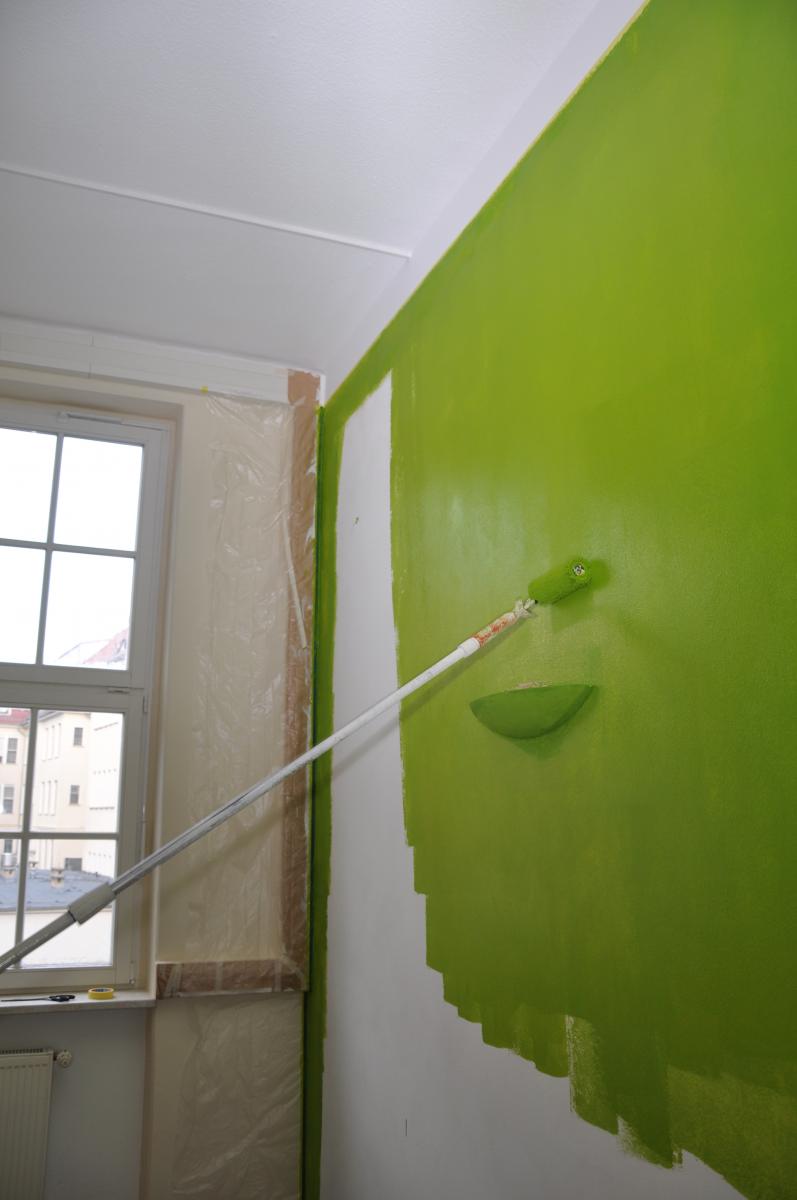
Today, interior paints are very popular, which is easily explained, because working with them, you will complete your tasks quickly and without much difficulty. Also, you can choose the desired color and do not spend sky-high money, unlike wallpaper. In addition, paint can cover both smooth surfaces and embossed ones, giving texture to the walls.
When choosing paints, you need to decide which material is worthy of your surfaces. The main thing to remember is that there are no universal materials!
In order to choose the right paint as possible, you need to be aware of the conditions under which the treated surface will be used (for example, if you want to paint the walls in the kitchen or corridor, which will have to be washed sooner or later - a washable finish is ideal for this).
The main requirement that the coloring mixture must meet is resistance to washing, light, being durable and easy to apply, and not having a strong odor. Also an important property will be the environmental friendliness of the material.
Now there are many companies on the construction market that offer an environmentally friendly product, which is also distinguished by its impeccable quality. High-quality washable mixture is produced according to modern advanced technologies and is ideal for rooms in which wet cleaning will often be done. This cover will serve you for many years.
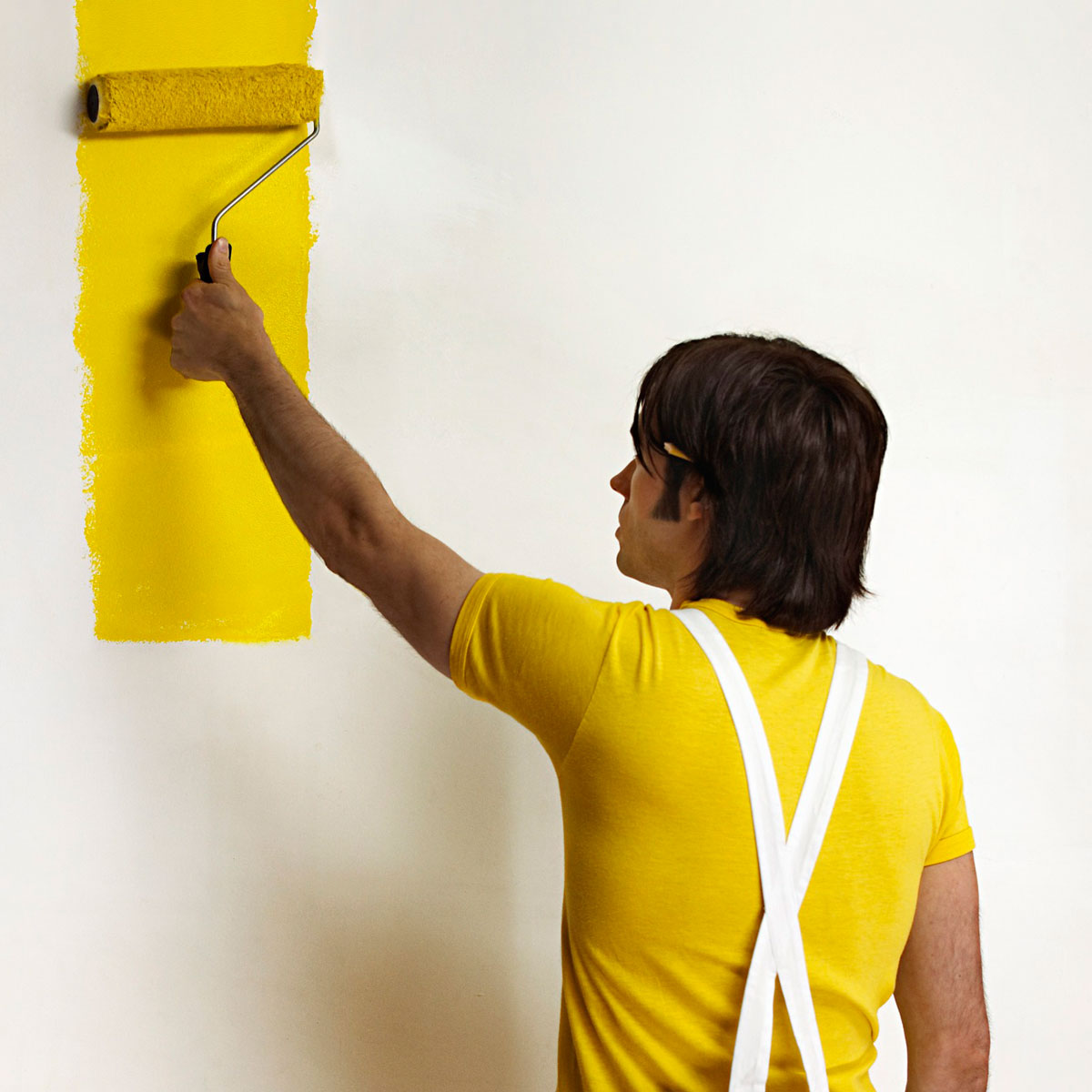
We paint the walls
Also, the mass should be economical in use and “smoothly” lay down on the surface. The better it will lay down on the wall, the less it will be required to complete the work.
High-quality material should have a high level of adhesion and not have a strong odor.
Another advantage that you should pay attention to when choosing a finishing material is the possibility of tinting. This feature will allow you to choose the most suitable shade for your interior in the tinting studio from a huge variety of shades. In such professional studios, in a matter of minutes they will help you choose the shade or color you need, allowing you to create your own original finish when performing painting works.
Varieties of paints
![]()
Before buying coloring mixtures, you need to decide on the purpose of the surface to be treated.
Unlike today, earlier oil mass was very popular. It was distinguished by the presence of a pungent odor, dried out within a day, was hardly removed from surfaces, and eventually lost its attractiveness. A more popular quick-drying option is material on water based that will last for many years.
In interior finishes, the oil mass is well suited for painting metal surfaces, while the latex coating is left for interior decoration.
A fairly common matte mass, which helps to hide defects on the surfaces of structures. A satin coloring mixture also works well, which creates a glossy finish and is easy to remove.
![]()
All dyeing solutions can be divided into 4 categories:
- emulsion;
- alkyd;
- adhesive;
- silicate.
Emulsion paint is water-based paint. Such a substance is considered environmentally friendly and fireproof, odorless, and also resistant to a humid environment after absolute drying. This coating can be applied to absolutely any surface. This type of finishing material does not have a carved smell, and will withstand the effects of alkalis.
The emulsion mass is divided into 6 subcategories:
- mass on a water basis;
- acrylic;
- latex;
- silicone.
Water-based material is well suited for rooms with a high level of moisture, does not exfoliate well after application and drying, is air and vapor permeable and odorless.
Acrylic substances are resistant to mechanical stress, differ in vapor permeability and water-repellent feature. They can retain their original appearance for a very long time, they are highly elastic and durable, but they are also quite expensive.
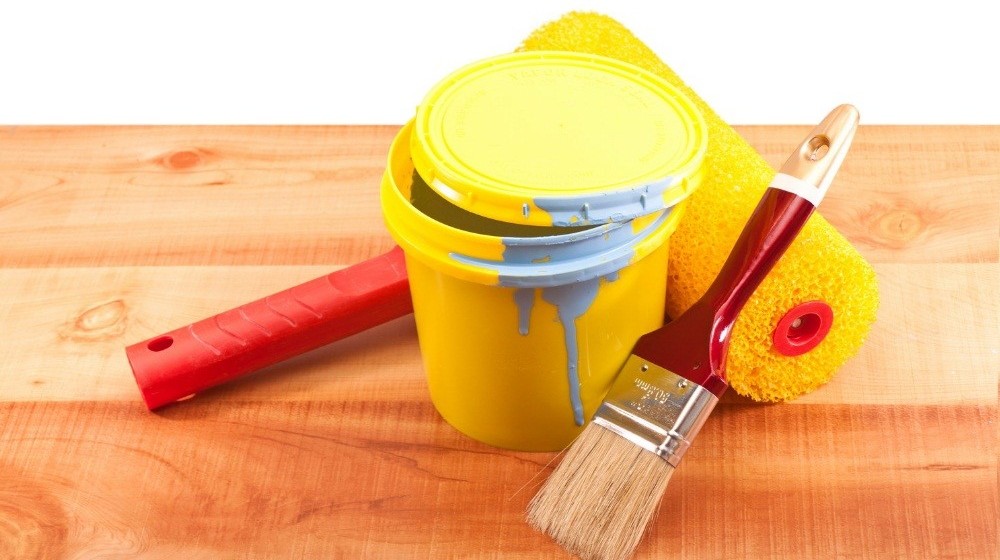
Latex-based substances open up great opportunities for builders:
- structural wallpaper for painting;
- painting of plastered walls and ceilings;
- drywall painting.
Drying time for such a coating is about an hour. This type of coloring material is considered the most expensive, because it contains latex, which gives the mass resistance to cleansing without losing its original color.
Silicone materials can be used for different types of mineral surfaces. It contains emulsified silicone resin, which gives the substance water-repellent properties, but at the same time does not prevent the penetration of air and vapors. This category of materials is also expensive.
Alkyd masses are used in the case of painting structures made of metal, wood and plastered surfaces. This category can be subdivided into the following types:
- oil;
- enamel.
The composition of the oil substance contains the main ingredient - drying oil. You can dilute such a finishing material with gasoline, turpentine or white spirit. The downside can be called a long drying time, as the time costs exceed 48 hours. Also, in the process of drying the material, harmful substances of an unpleasant odor are released, therefore, for interior decoration such material is not the best option.
As part of the enamel substance, the main ingredient is varnish. Such a tool is perfect for painting surfaces of various types, both for internal and external works. This coloring agent is fast-drying and resistant to moisture and light.
The composition of the adhesive masses are water-based polymers. Such substances are presented on the market in the form of a dry powder, which must be diluted with water before work to obtain the desired consistency. Such a pigment is not resistant to a humid environment and exposure carbon dioxide. This material can only be used in dry rooms. The main advantage of the adhesive mass is a diverse palette of colors.
The silicate mixture is used when painting the plastered surface. It contains liquid glass, and the environment is considered mineral-alkaline. Such material does not prevent the penetration of air, is not affected by sudden changes in temperature, but, unfortunately, it has a low level of moisture resistance and a limited color gamut.
The types and scope of the most popular coloring materials are shown in the table below.
How to choose a good material?
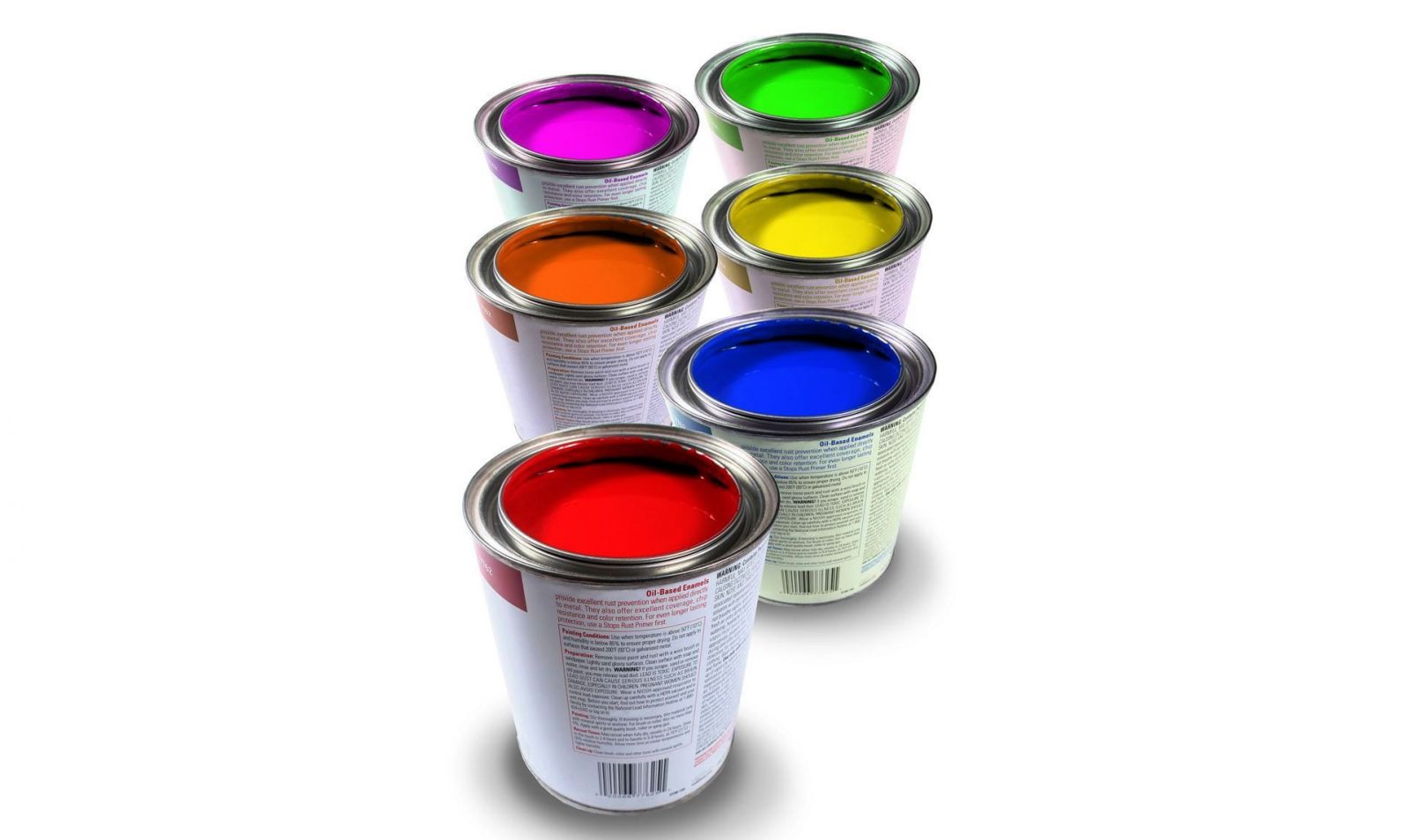
Interior wall paint
The most ideal option for surface finishing is considered to be a washable thin-layer mass based on latex.
When buying dyes, you should pay attention to its hiding power, resistance to the atmosphere, moisture and light, as well as the level of gloss.
For finishing the bedroom, living room or children's room, it is better to give preference to matte materials, and for processing kitchens or bathrooms, it is better to buy a semi-matt or semi-gloss finish, which can be cleaned better with water.
High-quality material, in no case, should flow, and the texture of the mass should be similar to jelly and “stick together” well with the treated surface, and the smell should not be caustic.
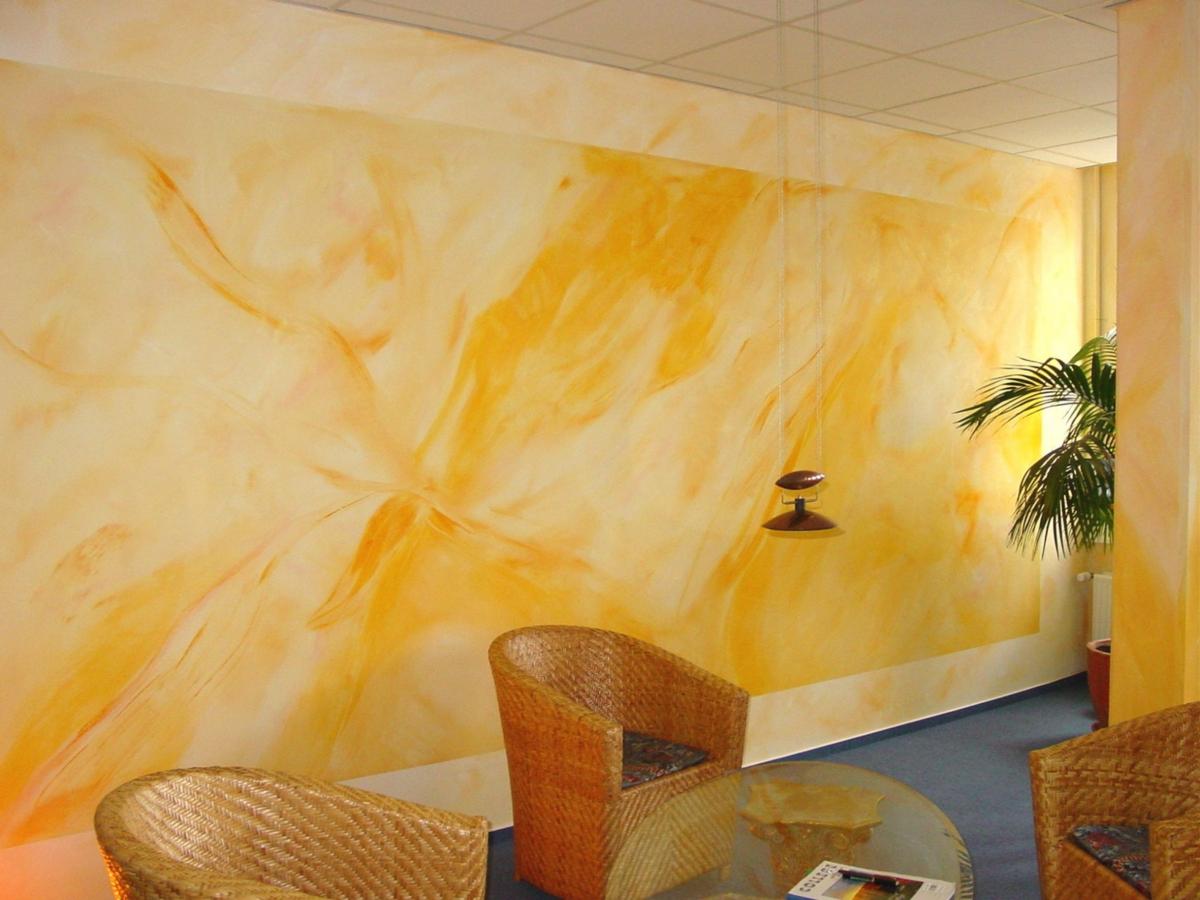
Situations when after the repair there are surpluses building materials is far from uncommon today. Not every person, especially a non-professional in construction, can correctly calculate the exact amount of materials, which raises the question of their further application.
If the packaging of the material is not damaged, then it can be removed until the next repair (when the expiration date allows) or sold. In the case when the package is opened, then the remains must be used, because otherwise the purchase of building materials will become an unreasonable waste of money.
For example, after decorating the facade of a house, paint remains. There is a widespread belief that such compounds include elements that adversely affect the human body, so use facade paints only for outdoor work. This conclusion is incorrect, since there are paints that are equally suitable for both outdoor and indoor work. If you still have such paint, then you can safely use it to decorate indoor surfaces..
The choice of facade paint for interior work
A huge advantage of facade paint is that its composition is designed taking into account the need to protect materials from the negative effects of external factors, including humidity and temperature changes. Accordingly, if facade paint will be used for interior work, then in addition to the aesthetic function, it will also perform a protective one.
As for the choice of paint and varnish composition, it must be done taking into account the following parameters:
Binders - quality paints use synthetic resins as binders. Based on them, acrylic and silicone paints are produced, which are distinguished by high quality and performance characteristics;
Water resistance - since exposure to moisture is detrimental to all materials used in the construction of houses and other buildings, it would be advisable to protect them not only from the outside, but also inside. This is especially true for rooms where elevated level humidity - bathrooms, kitchens, saunas, etc.;
The degree of wear resistance - in this regard, the best are acrylic paints. When applied, they form a dense surface that is resistant to various influences, including mechanical ones. Due to this property, the coating retains its aesthetic appeal for a long period of time;
Drying speed - almost all modern paints and varnishes are fast drying. But before buy facade paint, you should carefully study its composition and manufacturer's recommendations, since the coating is applied in several layers.
Experts recommend using exterior paints made on an acrylic or vinyl basis for interior work. Also, acrylic-silicone, silicone and silicate materials have proven themselves well for interior design.
Types of wall paints
On the modern market there is a wide range of facade paints that can be used not only for exterior, but also for interior work. Each manufacturer of such paints strives to improve the quality of their products as much as possible, therefore paints of many brands meet high international standards. The most popular of these include the following:
- silicone paint. O organosoluble facade special paint based on silicone. Recommended for application on plastered, brick and concrete surfaces. It does not contain substances that emit toxic fumes, so the paint can be used to paint surfaces in children's rooms;
Akrial-Lux- acrylic paint. O organosoluble acrylic-based facade paint. R the solvent which is a part of this paint provides fast drying of the painted surface. It was developed specifically for use in difficult climatic conditions, so it provides maximum reliable protection surfaces from the adverse effects of external factors. One of its advantages is an affordable price;
Facade Suite - water based acrylic paint. AT water-soluble facade paint with fungicidal additives, thanks to which the composition protects materials from various biodamages. When applied to the surface, it forms a thin, but at the same time incredibly strong polymer film that is resistant to adverse external influences and retains its properties for a long time.
acrylic paint Facade-Lux appeared on the market relatively recently, but has already proven itself from the best side. With its help, you can not only implement interesting design solutions, but also to provide reliable protection of surfaces from damage. One of the indisputable advantages of facade paint Facade-Lux is a loyal value. You can buy it in our online store cheap, without doubting the unsurpassed quality characteristics of the composition.
Construction market experts note: more and more buyers in recent times choose paint for interior decoration - whether it is a living or working space, a room, a bathroom or a kitchen.
The main thing at the same time is to choose the right composition for its purpose. We will tell you about washable paints for rooms with increased loads on the walls - corridors, hallways, kitchens.
Features of washable paints
To keep as long as possible high quality wall decoration in your home, you should take a closer look at washable paint, which allows you not only to achieve the desired color of walls and ceilings, but also greatly facilitate the repair process. As the name implies, washable paints form a coating that is suitable for wet cleaning, including with the help of various detergents. However, we will immediately report the first and most important rule, which should not be neglected - the coating cannot be rubbed with abrasive substances.By ditching wallpaper in favor of washable paint, you save yourself the hassle of a complicated papering process that requires periodic updates. It is especially rational to use wash paint if your family has a child who likes to paint on paper or vinyl surfaces. You can always wash the soiled surface, paint over the scratches or completely renew the wall covering. The main thing at the same time is to remember the brand and tone of washable wall paint in the palette or save its remnants for the future.
Any washable paint is primarily intended for use indoors with increased humidity. Such a coating in the bathroom will be a good barrier to condensation, and in the kitchen, the mixture will help you quickly and easily get rid of grease and soot. Thanks to the unique composition, it is possible to create a smooth surface in the form of abrasion-resistant film.
Washable paints are considered the ideal coating for non-woven textured wallpapers and glass wallpapers. Washable paint can be applied to plastered surfaces, concrete, brick, drywall and even wood. In a word, you can cover any porous slabs with this compound, with the exception of floor slabs.
Types of washable paints
Among the variety of washable compositions, water-based, water-dispersion, acrylic, alkyd, silicate, latex and silicone mixtures are distinguished. Acrylic and latex paints are the most widely used as the safest, easiest to use and have excellent performance characteristics. Oil paints are also considered washable, but recently they have not been used for interior work, as they have a strong odor, are toxic and flammable.Acrylic paints
Acrylic interior washable paints are perfect for decorating the living room, bedroom and nursery. In their composition, such substances contain resins of the same name, which give it a high level of elasticity. In particular, acrylic-based paints are best suited for use indoors with wooden walls. In addition, with their help you can mask minor defects on the treated surface.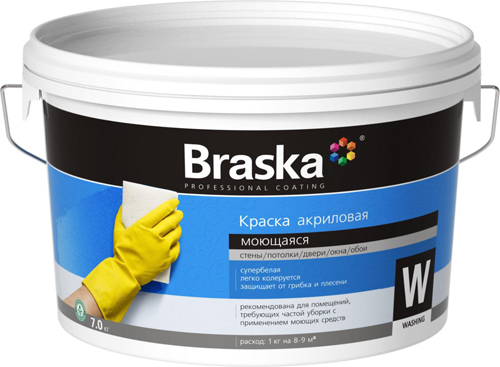
In addition, washable acrylic paints are devoid of unpleasant odors. Such a coating can be wiped as needed with a damp cloth and washed from time to time with a mild detergent. Depending on the intensity of mechanical impact, washable acrylic wall paints can withstand about 1500 - 3000 cleaning cycles without loss of quality. The only drawback of acrylic is its relatively high cost.
latex paints
Latex washable paints are superior to acrylic mixtures in terms of wear resistance. Latex substances are used to finish high-load areas - landings in administrative buildings corridors of schools and hospitals where, for hygienic reasons, regular cleaning with disinfectants and detergents is required. In a residential interior, latex washable paints are successfully used to finish the kitchen.
To wash walls covered with latex paint, you can take not only a sponge or cloth, but also a brush with soft bristles, as the coating is very resistant to abrasion. The price of washable wall paint based on latex is higher than the cost acrylic compounds. Acrylic and latex washable wall paints are "breathable" (vapor-permeable) finishing materials, which allows them to be used in rooms with high humidity - a bathroom, a bathroom and a swimming pool, without worrying about the appearance and reproduction of mold and fungus.
Washing paints are available in matt, glossy or semi-gloss according to the degree of gloss. The choice of paint type is dictated by the preferences of the owners of the house and the overall interior design. But there are also small nuances in this matter: if you regularly wash only certain sections of the walls, for example, the corner of the corridor or the dining table area, it is better to use semi-gloss or glossy paint. After all, the coating from frequent cleaning can be “polished”, and the difference with a matte wall will be clearly visible.
Companies in the market of washable paints
In the construction market, you will most likely be offered products from the following brands: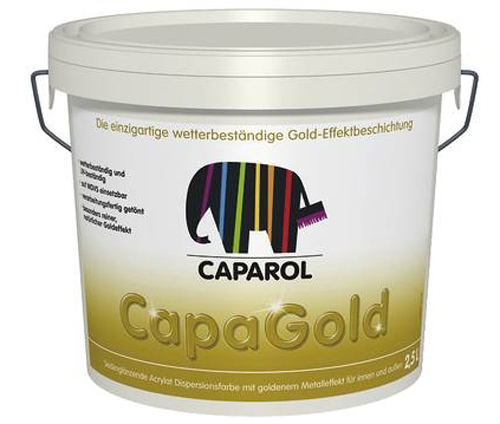
Getting down to business
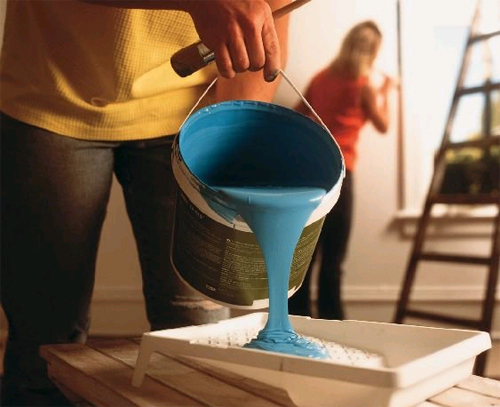
Although painting the walls is much easier and faster than working with wallpaper, it is worth remembering that some preparation and strict adherence to technology will also be required here.
Preparatory work
If, when sticking wallpaper on the walls, small irregularities of the walls and defects are allowed, then painting requires perfect evenness of the surface, as it exposes all the imperfections of the walls to the public. Therefore, the surface to be painted must be pre-cleaned with a stiff brush and even washed with water and detergents to remove dust, grease stains and other contaminants. Heavily soiled walls are recommended to be cleaned with weak solution drinking soda.
If old coatings of oil paint or enamel have peeled off and cracked, they should be removed, sanded to a roughness and cleaned of dust. Old chalk whitewash must also be completely removed. Potholes, cracks and irregularities must be leveled with acrylic fillers.
For the best appearance walls and save paint, the surface should be additionally coated with an acrylic water-dispersed primer, wait until it dries, and only after that you can start painting. If the walls are made of drywall sheets, then you need to carefully putty the joints and level the surface.
The surface of walls that are infected with fungus or mold is recommended to be treated with a special agent to remove mold even before applying the primer. Mold and dead fungi are mechanically removed after drying. If the surface of the walls is heavily infected, the process must be repeated several times over several days.
How to apply paint
Washable paint is sold, as a rule, already in finished form. Such compounds can be transported on any transport, and stored at a temperature that does not fall below zero. According to reviews of washable wall paint, with a slight frost (not lower than minus 20 degrees Celsius), the paint can retain its properties for several hours. If the paint freezes, it should be kept at room temperature for at least a day before use.
After opening the can, the paint must be thoroughly stirred. If necessary, it is diluted with water to apply the first layer by 5 - 10% by volume. The paint for the second layer is not diluted. It is recommended to start work at an air temperature of at least 5 degrees Celsius, because a lower temperature can increase the drying period of the paint, and not higher than plus 30 degrees. Ensure maximum ventilation of the room during paint application.
The paint must be applied with a roller or brush by spraying on a clean and dry surface in two layers. You can use a foam, fur or velor roller. Also, if desired, you can use the spray gun for this work. Under normal conditions (temperature - plus 20 degrees, humidity - 65%), it usually takes about an hour and a half to dry one layer of washable paint. But it is recommended to wait a little longer before applying the next layer, as this will be displayed in the final result in the most positive way. Remember that as the humidity rises and the temperature falls, the paint will take longer to dry.
Washable wall paint is not explosion and fire resistant due to its water base. But some precautions still need to be observed. First, do not let the paint get into your eyes and hands: for this you must use rubber gloves without fail. If the substance comes into contact with the skin, it must be washed off immediately with soap and water. Also, when using washable paint, you can not inhale its vapors, so use masks, respirators or other respiratory protection.
The hiding power of paints of bright red, yellow, orange, burgundy and green shades is somewhat lower, so it is worth applying a composition of a lighter shade as a base layer, which is characterized by better hiding power, and then paint the surface with two layers of the selected shade. Please be aware that once the paint has been applied, the tone of the coating may differ slightly from the originally selected color of the washable wall paint, depending on the roughness, absorbency of the surface, as well as the general illumination of the room.
Finishing the job right
After using the paint, the tool and container must be washed with warm water, while removing as much paint as possible from them. The remains of the coloring composition should be tightly closed with a lid. It is strictly forbidden to pour them into the sewerage or water supply system. If in a few years you decide to repaint the walls, then when working with these compounds you do not need to scrape the walls - you can apply up to 20 layers of washable paint without removing the previous ones!
After applying the washable wallcovering for about a month, the surface must be handled with care until it acquires final wear resistance and hardness. For washing, it is recommended to use water, neutral detergents or detergents of medium alkalinity (pH below 9). Do not use abrasive cleaners, organic solvents, hard sponges and brushes, as strong friction of the surface will make it glossy.
During repairs, it often happens that materials are calculated incorrectly or taken with a margin. As a result, a significant part of the acquired material remained unused.
And then the question is asked: what to do with it and where to put the leftovers? If the packaging is not damaged, then the remnants of the material can be sold, but if the packaging is opened, then you can try to find application in other areas. Painting with exterior paint
For example, after finishing and decorating the facade, paint remained. Can it be used to paint interior walls?
The choice of paint according to the characteristics
Facade paint is not only a design tool, a decorative element, it is also designed to protect the facade of the house from various destructive influences. The main factor that can damage walls is precipitation.
Temperature fluctuations are equally damaging. In this case, it is necessary to protect the walls from the appearance of mold, fungus. The main parameters in determining the quality of color for facade decoration are:
- binders;
- water permeability;
- resistance to solar radiation;
- wear;
- consumption;
- drying speed.
It is customary to use resins of synthetic origin as binders (acrylic, silicone, vinyl-based colors are made on their basis). In addition, cement, potash glass, and lime are sometimes used.
Binders significantly affect the quality of the paint. Inexpensive colors practically do not contain such substances. To increase the volume, various fillers are added to cheap products, but they do not make the composition better.
It is not possible to check the actual presence or absence of binders in the paint, this information can only be obtained from the manufacturer.
Surfaces covered with facade paint should provide a water-repellent effect so that the walls do not get wet and dirty.
A large amount of moisture will contribute to the appearance of cracks and shedding of plaster, in such places mold reproduces well. The coefficient indicating the size of the absorption qualities of the paint is the W sign. A low value indicates that the moisture resistance is high.
Resistance to solar radiation. Warming up and drying the facade, the sun does not allow the fungus to multiply, but excessive exposure to sunlight often leads to the fact that the color fades gradually, cracks appear, the paint may swell.
This quality of paint determines its basis. Acrylic-based paints are considered the most resistant.
The facade periodically requires removal of pollution. In addition, the color wears out in places where they often touch the wall.
wall painting
A good paint fastness ratio will allow it to remain aesthetically and practically untouched for a long time.
Wear is determined by the number of wet or dry cycles.
Currently, the market offers colors of similar characteristics, depending on the volume of consumption. This figure is calculated per 1 m². Less paint is used to cover smooth surfaces.
Do different paints dry the same way?
Drying time is measured in hours. Manufacturers usually provide a couple of values for this parameter. The first is the period after which the next layer of paint must be applied, and the second determines the complete drying of all applied layers.
Types of paints:
- oil;
- alkyd;
- acrylic;
- silicone;
- calcareous;
- polysilicon;
- cement;
- silicate.
Depending on the material of the surface on which they are applied, combinations of these varieties can be used.
Paint selection
Is it possible to paint indoor areas with facade paint? For cement, lime, surfaces treated with organic materials, ceramic bricks, it is better to use paints based on vinyl or acrylic.
Also, silicone, acrylic-silicone, silicate, polysilicon bases are suitable for such surfaces. Cement and lime paints can be used to finish the facade.
Silicate based paint
Silicate plaster and brick - paints based on silicate, polysilicon, lime, cement are used on such surfaces.
For concrete, it is better to use acrylic paints with a significant content of acrylic resin, silicone, silicate or polysilicon.
Wooden surfaces are coated with paint containing alkyd, having previously treated the surface with an antiseptic.
One of the new and frequently used varieties of facade paint is textured paint. It creates a protective film on the painted surface, which makes it more moisture resistant and allows you to protect the facade.
Similar information is described on the product packaging. The supplier can also ask about these characteristics.
Depending on what kind of paint was used for the facade, you can determine whether it is suitable for interior work.
The compositions that are used for painting concrete, stone, wood, lime surfaces are suitable for painting the room both outside and inside. Only the number of applied layers will differ.
After all, the internal walls and ceiling do not need to be so carefully protected from the effects of external natural factors. But at the same time, one should not forget about internal influences.
Therefore, it is most appropriate to paint using such compositions in rooms where walls and ceilings are constantly exposed to moisture or temperature changes.
Such compositions are suitable in rooms where there is no place for wallpaper and decorative plaster. These areas include the bathroom and kitchen. Steam constantly accumulates in the bathroom, and grease settles on the walls and ceiling of the kitchen.
Even a good hood does not help. Good points facade paint coatings of internal walls are its water-repellent properties and wear resistance. You can wash such walls often and safely.
If textured paint was used when painting the facade, then it is not recommended to use it indoors. Due to its peculiarity of creating a protective film on the surface, when such a color scheme is applied to the internal walls, they will stop "breathing".
This can lead to moisture formation, flaking. In an enclosed space, such qualities of paint can promote the cultivation of fungus and mold, so it is not recommended to paint surfaces with them.
Before applying facade paint to the inside of the house, you need to know exactly what harmful and toxic substances are present in it.
In addition to the aesthetic appearance and protection from various atmospheric influences, facade paint also protects against insects and moss. To do this, many manufacturers do not hesitate to add fungicidal additives to the composition.
Pros and cons of using facade paint
In any case, it is not just that colors are distinguished for processing external and internal walls, their price also differs significantly. Therefore, when making calculations, making an estimate, it is better to check the parameters several times, recalculate the volumes and material consumption for this volume.
In order to avoid undesirable consequences, it is necessary to use materials according to their purpose. But if it so happened that you didn’t calculate, think carefully and figure out how to make it more profitable, based on the available materials and data.
Information is the main weapon in the hands of the builder. Don't neglect her. Those who have children in the family should be attentive to such experiments.
After all, they will be located not only in the nursery, where the space is painted with organic paints, but also in the kitchen, in the bathroom, where the use of facade paint is being considered.
Weigh all the pros and cons, read the reviews on construction forums, perhaps someone already has experience in using a particular type of color scheme. Similar information can be obtained from the paint manufacturer.
Making recommendations to their own detriment, creating the ground for anti-advertising, the manufacturing company will not. Based on the data obtained, a final conclusion can be made about the possibility of using a particular facade paint for interior decoration.
__________________________________________________




















